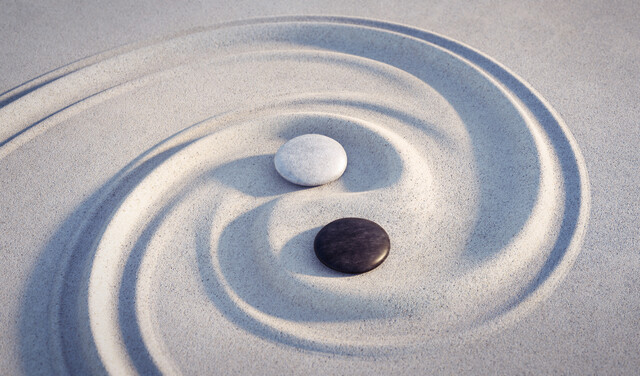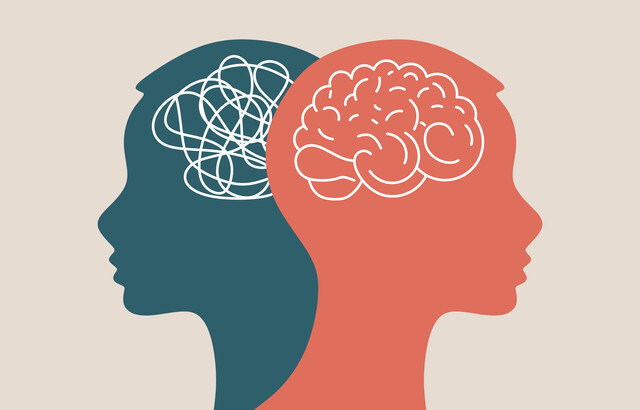Online Class: Interior Design 101

no certificate
with CEU Certificate*
-
15Lessons
-
25Exams &
Assignments -
4,166Students
have taken this course -
10Hours
average time -
1.0CEUs
Course Description
In order to create an interior environment, designers need to think about the form and functionality of the space. The form refers to the look and feel. The functionality refers to how they space will be practically used. In order to effectively blend form and functionality, designers need to rely upon many resources, guidelines, and professionals.
Interior designers often tend to be interior decorators. After all, designers are often responsible for all aspects of a project, including the design, development, and finishing touches. However, interior decorators may not necessarily be interior designers; designers need to have more in-depth knowledge than decorators.
While many interior designers are also decorators, designers do not generally take on other professional roles, such as plumber, carpenter, electrician, or otherwise. Therefore, designers must work closely with many other industry professionals.
Interior designers also have the liberty to be self-employed or to work with a firm. Either way, there are some business skills and best practices that every interior designer should use in order to be successful.
This course is designed to teach you how to be an interior designer by focusing on interior design from a macro level. If you decide to pursue an interior design career after reading about everything that will be required of you if you choose to pursue a career in interior design, then you will spend years learning the minute details that are essential to creating a successful design.
Note: This course focuses on all aspects of interior design. While interior decorating plays a large role in interior design, it is important to remember that the two are not the same. This course will not go into great detail about interior decorating, but, rather, will provide an overview of the kind of information interior designers will need to know.
- Completely Online
- Self-Paced
- Printable Lessons
- Full HD Video

- 6 Months to Complete
- 24/7 Availability
- Start Anytime
- PC & Mac Compatible
- Android & iOS Friendly
- Accredited CEUs

Course Lessons
Lesson 1. The Essentials of Interior Design
Interior designers blend creativity with technical skills to optimize both functionality and aesthetic appeal in spaces, working closely with various professionals to ensure compliance with regulatory standards. They differ from decorators in their ability to manipulate foundational elements and manage complex projects, often requiring certification or licenses to practice.Lesson 2. The Origins and Evolution of Interior Spaces
Throughout history, interior designers have balanced the dual goals of functionality and aesthetics, learning foundational principles from early human habitats. With the Industrial Revolution and mass production, interior design flourished, leading to the establishment of professional organizations and educational institutions that continue to shape the field today.Lesson 3. Design Principles: Building Spaces that Resonate
Interior designers must grasp key principles such as color, texture, and lighting to create stylish and functional spaces in collaboration with clients. Successfully integrating elements like furniture and accessories hinges on understanding a space's style and the client's vision from the outset.Lesson 4. Designing with Color: A Comprehensive Guide
Color is integral to design, informing mood and balance through its scientific properties and extensive palette possibilities, enabling harmony and contrast within spaces. Designers employ techniques from feng shui to color psychology to enhance interiors, ensuring each color selection contributes to the intended atmosphere and style.Lesson 5. Exploring Timeless Trends: A Deep Dive into Historical Design Styles
Throughout history, major design styles have been shaped by cultural and environmental influences, with designers needing a broad grasp of these styles to apply them adeptly in projects. Examples span from Adam's neoclassical elegance to Baroque's opulence and the functional simplicity of Craftsman style.Lesson 6. Understanding State and National Design Codes
Interior designers must navigate a comprehensive landscape of state, national, and international codes to ensure the safety and regulatory compliance of their projects. Understanding and implementing these codes, like those from the ICC or the ADA, is crucial for safeguarding public welfare and for professional certification requirements.Lesson 7. Understanding the Role of Standards in Interior Design
Interior designers adhere to standards based on best practices, offering reliable guidance for effective design. Aligning with standards can also aid in meeting varying code requirements across regions, enhancing overall project quality and compliance.Lesson 8. Mastering Certifications in Interior Design Specialties
Interior design professionals often amass credentials like CID or ASID, which are dictated by licensing requirements and specialty interests; these may span from kitchen design to advanced environmental planning. Achieving such certifications signifies a dedication to comprehensive and lawful design practices within the public domain.Lesson 9. Mastering Design Niches
With a focus on industry-specific nuances, interior designers enhance public health, safety, and happiness in spaces from corporate offices to hospitality venues. Their expertise in materials and design codes ensures spaces are both functional and inviting.Lesson 10. Building the Future: Understanding LEED Standards
LEED, or Leadership in Energy and Environmental Design, provides a framework for environmentally friendly building practices, affecting everything from design to operations. Interior designers can become LEED-accredited to demonstrate their understanding of green design strategies and contribute to eco-friendly projects.Lesson 11. Unlocking Market Potential: The Strategic Advantage of LEED Certification for Interior Designers
With LEED credentials, designers gain a competitive edge in the job market by showcasing their commitment to green building practices, which are increasingly valued by employers. The certification not only reflects one's knowledge but also their dedication to advancing in the sustainable design field.Lesson 12. Interior Design Essentials: Knowledge and Skills
Interior designers require multifaceted expertise in design elements, safety regulations, and advanced communication to tackle diverse project challenges. Understanding how human environment needs intersect with regulatory and construction knowledge is crucial for success.Lesson 13. Mastering the Art of Interior Design Business Success
The journey of an interior designer doesn't stop at acquiring certification; it extends into active business development through strategic branding and financial management. Networking with other experts and consistently upgrading one's skills as per industry trends ensure that designers remain at the top of their game.Lesson 14. Interior Design's Connection Map
Interior design associations provide crucial networking, continuing education, and professional development resources for designers at various stages of their careers. Membership can offer certifications and accreditations that enhance one's professional stature and protect public safety through established standards.Lesson 15. Essential Resources for Interior Design Professionals
Thousands of websites focus on various aspects of interior design, allowing professionals to specialize and stay informed about industry dynamics. Consumer and trade magazines serve as comprehensive resources, offering insights and news tailored to either industry professionals or design enthusiasts.
Learning Outcomes
- Define the roles and responsibilities of interior designers compared to interior decorators, highlighting their specific skills and regulatory requirements.
- Identify the collaboration process between interior designers and other professionals, emphasizing the interdisciplinary nature of the field.
- Describe the evolution of interior design and how historical architectural practices have shaped modern principles of form and function.
- Identify key historical influences, such as the Industrial Revolution and development of interior design schools, on the current state and perception of interior design as a profession.
- Demonstrate the ability to develop a preliminary decorating plan for a client project, incorporating style considerations and client preferences into space design elements.
- Identify and describe the fundamental interior design principles of color, texture, lighting, and furniture application in creating cohesive space designs.
- Define and explain the impact of primary and secondary colors on creating customized color palettes in interior design.
- Identify and analyze how color psychology can influence mood and functionality within interior spaces.
- Demonstrate the ability to compare and contrast various interior design styles by identifying common features and unique elements of each style in given design examples.
- Recognize the key characteristics and elements of major historical design styles, such as Adam, Art Deco, and Bauhaus, through visual identification and description.
- Define the primary types of building codes relevant to interior design, including accessibility, safety, and energy regulations, by referencing national and international standards.
- Identify state-specific certification and licensing requirements for interior designers, explaining the importance of adhering to local building codes and regulations.
- Demonstrate understanding of the role of standards in ensuring compliance with regional codes and regulations by identifying relevant interior design standards.
- Demonstrate mastery of lesson content at levels of 70% or higher.
Additional Course Information

- Document Your Lifelong Learning Achievements
- Earn an Official Certificate Documenting Course Hours and CEUs
- Verify Your Certificate with a Unique Serial Number Online
- View and Share Your Certificate Online or Download/Print as PDF
- Display Your Certificate on Your Resume and Promote Your Achievements Using Social Media

Choose Your Subscription Plan
No Certificate / No CEUs
This course only
| Includes certificate | X |
| Includes CEUs | X |
| Self-paced |

|
| Instructor support |

|
| Time to complete | 6 months |
| No. of courses | 1 course |
Certificate & CEUs
This course only
| Includes certificate |

|
| Includes CEUs |

|
| Self-paced |

|
| Instructor support |

|
| Time to complete | 6 months |
| No. of courses | 1 course |
Certificates & CEUs
Includes all 600+ courses
| Includes certificate |

|
| Includes CEUs |

|
| Self-paced |

|
| Instructor support |

|
| Time to complete | 12 Months |
| No. of courses | 600+ |
Certificates & CEUs
Includes all 600+ courses
| Includes certificate |

|
| Includes CEUs |

|
| Self-paced |

|
| Instructor support |

|
| Time to complete | 24 Months |
| No. of courses | 600+ |
Student Testimonials
- "This course help a lot and more about about my goals to became an professional interior designer." -- Lolomanaia T.
- "Instructor was outstanding!" -- Doug W.
- "The lessons were informative and very helpful." -- Johanna T.












